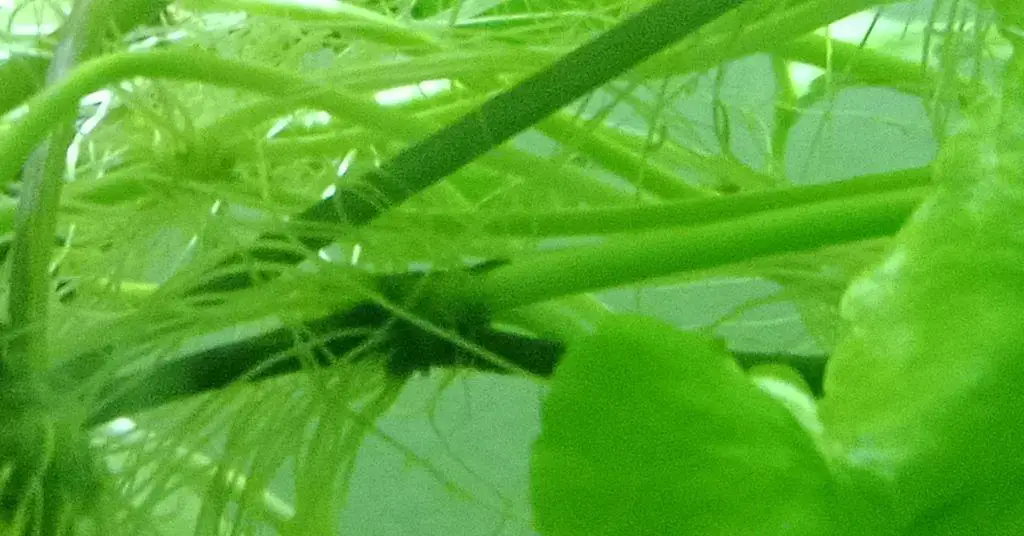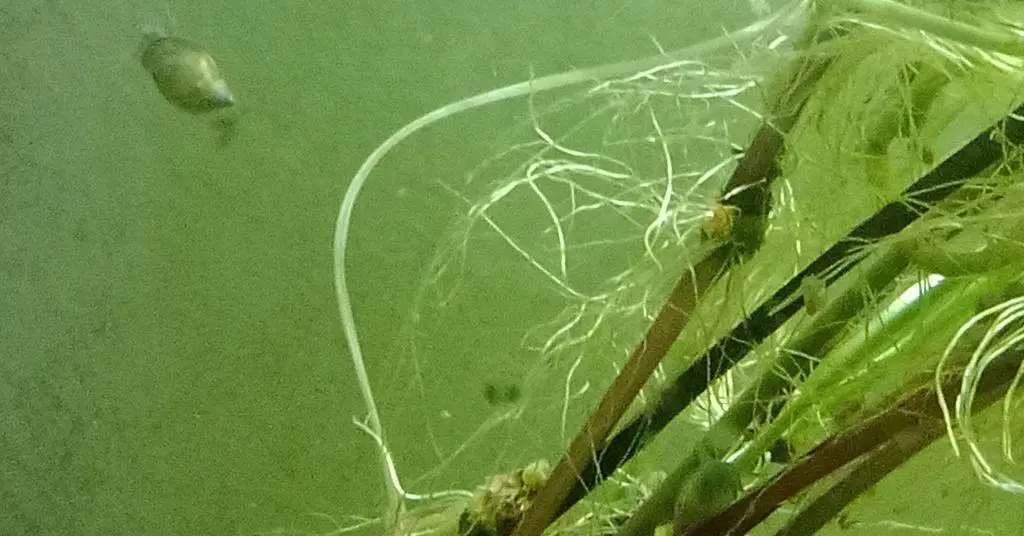Last Updated on September 14, 2022 by cmoarz
Looking to add more stem plants in your aquarium but find they seem to die too easily? There are a few tricks involved in keeping stem plants alive during the transition period.
These 3 easy steps have helped countless aquarists get their stem plants to thrive and ensure that your new stem plants have a higher chance of survival. We personally use them when trying to propagate new clones and transitioning plants to tanks with wildly different water parameters, and our success rate has skyrocketed.

Step #1. Float the plant first so they have time to acclimate
Table of Contents
When plants are moved from one environment to another, they go through a lot of stress. This is especially true for stem plants since they are typically grown emersed (out of water) and then submerged (underwater).
To help them transition, it’s best to float the plant in their new tank for several days before planting them. This will give them time to slowly adjust to the new water conditions and de-stress.
During this time, You will definitely notice a ton of new growth (assuming light levels are good). New green stems will start to shoot out of the older brown stems and start developing aerial roots along its nodes.

This is a good sign that the acclimation process is going well. But don’t be disheartened when you notice the old brown stems start “rotting” away.
This is called melt, and it’s the plant using up all the energy in those old stems in order to produce new growth before the plant’s new aerial roots are mature enough to start bringing in more nutrients.
This often alarms people to the point where they think they have done something wrong, and they think their plant is dying. But it’s actually a perfectly natural process and a sign that the plant is adapting well to its new environment.
So don’t panic! You should trim these pieces away once they become a gooey transparent substance just under the node. Do not cut the node itself unless it has also begun to melt.

Step #2. Plant the plant’s roots, Don’t burry the rhizomes
Once most of the melt seems to be slowing down, it’s time to plant your new stem plants.
It’s important when planting stem plants that you focus on getting the roots buried and leaving the rhizomes (the horizontal stem just under the node) out of the substrate.
This is because rhizomes are where most of the new growth will happen, and if they are buried they will start to rot. This will cause the plant to produce fewer new stems, and the ones it does produce will be weak and likely to die.
So make sure when planting that you only bury the roots, and leave the rhizomes exposed. Sometimes these roots are very short and nearly impossible to plant. In these cases, it’s a good idea to use a piece of driftwood or a rock to secure the plant in place until it can produce new roots.

Step #3. Fertilize appropriately
Fertilization is ideal for the plant’s health and growth, however, too much too soon can shock and/or kill your new stem plants.
We recommend waiting until the plant has started to produce new growth before fertilizing. This way you can be sure that the plant is healthy and acclimated enough to handle the added nutrients. This means the new aerial roots are long and white and growing all over the new stem growth.
When starting to fertilize, we recommend using a very low concentration of nutrients. 1/4 to 1/2 of the recommended amount should be more than enough for your new plants. Remember, it’s better to under-fertilize than to over-fertilize.
You can slowly increase the concentration as the plant grows and adapts, but be sure to keep an eye on your water parameters. Too many nutrients can lead to algae problems down the road.
Until your roots are fully capable of being planted in the substrate, you should avoid root tabs and opt for water column nutrients at the beginning.

Understanding plant melt and why it happens (top to bottom or bottom to top)

Plant melt is a scary thing to see for any aquarium keeper, especially when you first start out. But it’s actually a perfectly natural process and a sign that the plant is adapting well to its new environment.
Melt can happen for a variety of reasons, but the most common cause is simply because the plant is not getting enough nutrients.
When moving plants to new tanks and environments, this is often the case because the old aerial roots aren’t accustomed to the new substrates and water parameters.
This can cause the plant to start using up all the energy in those old stems in order to produce new growth before the plant’s new aerial roots are mature enough to start bringing in more nutrients.
This process can happen both bottom to top (stem to leaf) and top to bottom (leaf to the stem) and really depends on the type of plant and the environment it’s in.
For most stem plants, the bottom-to-top melt is the most common because they are constantly producing new growth at the tips of their stems. As this new growth uses up nutrients, the older leaves further down the stem begin to lack those same nutrients and start to die off and melt away.

Don’t be afraid to replace stock bulbs and LED’s in a tank
Lighting is super important during this whole process. Not only for the leaves but for the stems as well.
For most stem plants, you want to focus on a light that has a high kelvin rating. This means it will be more on the blue end of the spectrum and have less yellow/orange light.
The reason for this is that blue light promotes growth while yellow/orange light promotes flowering. Since we want the plant to focus on producing new growth, we want to avoid any light that will promote flowering.
For most aquariums, we recommend a light with a kelvin rating of 6500k-10000k. This will provide the perfect balance of light for stem plants to grow and thrive.
Most likely the stock bulb or LEDs that came with your aquarium hood aren’t going to be the right kind of light. So don’t be afraid to replace them with something that will better suit your needs.
You may even want to consider adding additional lights if you have a larger aquarium or are wanting to grow taller plants. The bigger the tank is, the more powerful the light will need to be to cut through the water column and reach the plants down below.

Knowing when it is too late to revive a plant and move on
A simple fact about plants is they are very resilient and can come back from a lot of different stressors. But there are times when it is just too late and the plant is beyond saving.
As long as the plant has 1 set of good roots, it stands a chance. But if the roots are all dead or rotted, then there is nothing left for the plant to feed off of and it will eventually die.
If you see that the plant is starting to rot, it’s best to just remove it from the tank and start over with a new one.
Some rotting plants can release toxins into the water that can harm or even kill other plants and animals in the tank, so it’s best to just get rid of them as soon as possible.
If you do wish to try and save a plant, cut away all the dead tissues and replant it in the fresh substrate. This will give it a chance to start growing new roots and hopefully recover. (You may optionally wish to float it for a time before planting).
But be aware that even if the plant does start to grow back, it will never be as healthy as it was before and is more likely to succumb to stressors again in the future.

Using root starters on cuttings necessary for aquarium stem plants?
Rooting hormones are a great addition to plants you are growing out of the water. They can help stimulate growth and promote healthy roots.
However, they are not necessary for plants that are already growing in water.
Any rooting hormone will instantly be washed away from the stem as soon as it hits the water. So there is no point in using it on stem plants that are already growing in your aquarium. Worse, It may cause cloudiness.
It’s not necessary to use a root starter on aquarium plants that are being submerged, they do just fine without it. As for emersed plant growth, it works well to help the plants transition into their new environment.
Final Thoughts
Plants have been growing in nature without the help of human hands for millions of years. So don’t be afraid to let them do their thing and just enjoy the beauty they bring to your aquarium!
Melt happens, and it’s a totally natural process that happens to all plants at some point. Just because a plant is melting doesn’t mean it’s dying, it’s just going through a normal process of shedding old leaves to make way for new growth.
If you see a plant starting to melt, don’t panic! Just give it some time and it will recover. In the meantime, you can trim away any dead leaves to tidy up the plant.
If you see melt on a well-established plant, It could be an indicator that it’s low on certain nutrients. So be sure to check your water parameters and fertilize accordingly.
About
Owner of AquariumGravel.com and also owner of actual Aquarium Gravel believe it or not! ;). Setting up beautiful aquarium sceneries and habitats since I was very young. Enjoy!
- Web |
- More Posts(290)

